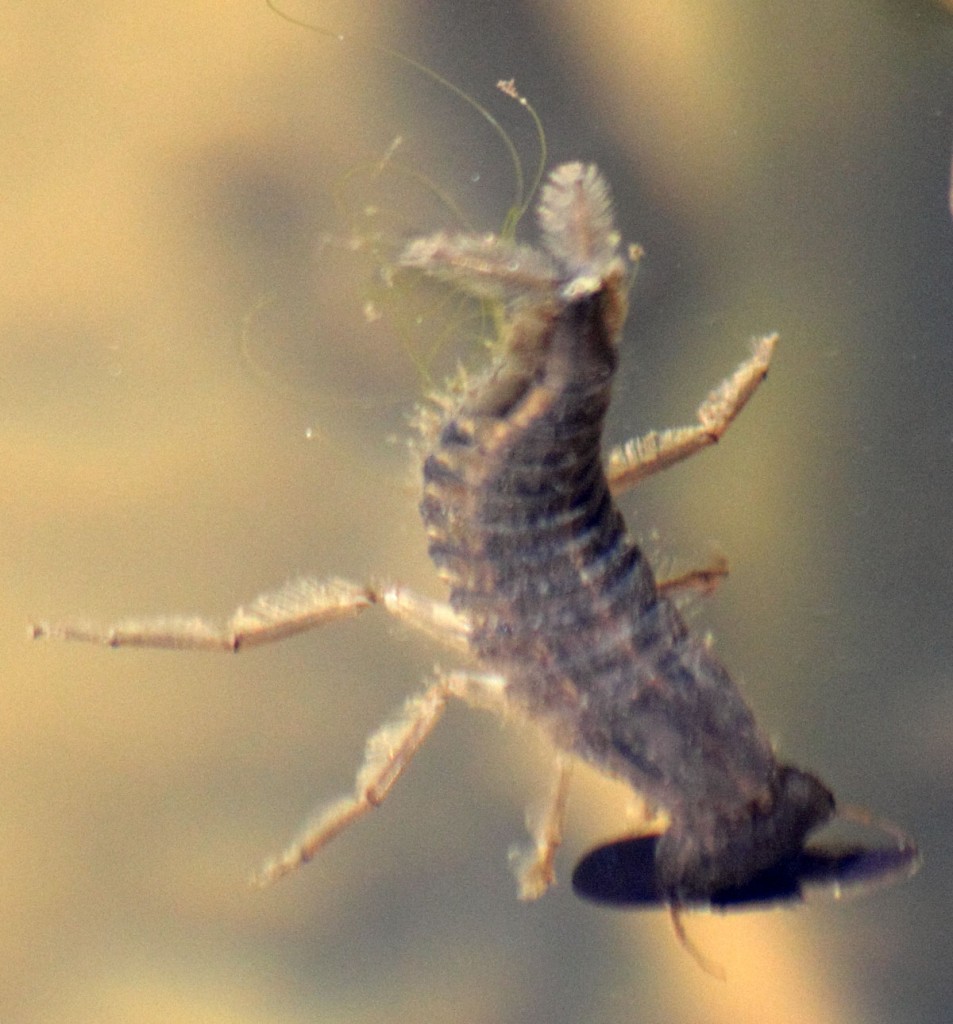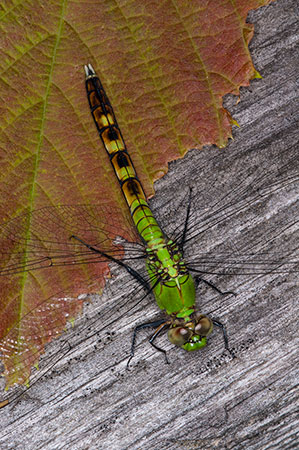Damsels and dragons
A nonfiction essay about damsels and dragons sounds like a contradiction in terms, or at the very least like a stale gender stereotype. But dragons are real. Damsels, while appropriately slender and elegant, and garbed in bright colors, are not the shrinking violets of fairy tales. They are every inch the airborne flesh-eaters that their chunky dragon cousins are.
If you’re out on a mild September day you may see large numbers of dragonflies and damselflies—shiny red, green or blue jewels—darting about. It’s a treat to watch them snap up insects and, more impressively, mate in mid-air.
Dragonflies and damselflies are carnivorous insects in the order Odonata. Dragonflies are in the sub-order Anisoptera, a term meaning not (an) the same (iso) wings (ptera). Their front pair of wings are longer than hind pair, which is one way to tell them from damselflies, which are in the sub-order Zygoptera in case you were wondering. There are an estimated 6,000 Odonata species in the world, nearly 200 of which have been identified in New York State.
Dragonflies, powerful fliers, can be so large they can look like a bird at first glance. When resting they keep their wings outstretched; a line of them basking on a log seem like small planes waiting to take off. I’ve been told it’s good luck if one lands on you. Probably the “luck” is that they repel deer and black flies.
Damselflies are much more slender than dragonflies. In damsel-like fashion, they fold their wings primly along their bodies And while many dragons are colorful, damsels outshine them with bright, iridescent “gowns.” Damselflies are sometimes called darning needles, and even the official literature lists such damselfly names as “variable dancer” and other descriptive titles.
Both kinds of insects are beneficial in that they eat plenty of black flies, deer flies, mosquitoes and other biting insects. Not surprisingly, they breed in the same habitats as their prey. Damsels and dragons lay their eggs right in the water or on vegetation along streams, rivers or ponds.
The nymphs (immature stages) are monster-like with little resemblance to adults. You can get a sense of what their choppers look like if you watch the movie Alien. Seriously, when magnified you can see their primary jaws (actually labia, but they act like jaws) open to reveal a second or even third set of hinged jaws (palps, technically). Depending on the species, nymphs get pretty big—the family Tanytarsidae produce juveniles the width of your hand.

Dragonfly nymph eating a tadpole. Photo: Dunpharlain, Creative commons, some rights reserved
Damsels and dragons spend most of their lives—between one and three years—underwater. Even as youngsters they put a dent in the pest population, gobbling soft grub-like larvae of deer flies and horse flies from the mud and munching mosquito larvae near the surface. They shed their skins, or molt, as many as twelve times as they mature.
Nymphs don’t pupate, but when full-grown they crawl from the water, anchor their toenails (tarsal claws) into the nearest tree stump or boat dock, and “unzip” their skin along their backs. Outdoing any science-fiction film, a graceful dragon or damsel emerges from its monster-skin.
After drying its new wings in the sun for a while, these killing machines fly off to eat pests, and of course to mate in a precise and complex ritual. This choreography involves the male passing a sperm packet from his primary genitalia at the end of his tail to a secondary set mid-body, from which the female retrieves it and inseminates herself. All while hitched end-to-end in a “wheel” and engaged in aerobatics. In some species the pair flies in tandem during egg-laying as well.
I hope you get to enjoy a few “Indian summer” days this autumn, and that you get to see dragons and damsels dancing amidst falling leaves.
Paul Hetzler is a horticulture and natural resources educator with Cornell Cooperative Extension of St. Lawrence County.
Tags: damselflies, dragonflies, insects, nature







.png)


Thank you for this essay … I look forward to your posts and this one was very good. I have enjoyed watching the dragons and damsels emerge from their shells in the spring. Amazing critters.
very interesting essay.